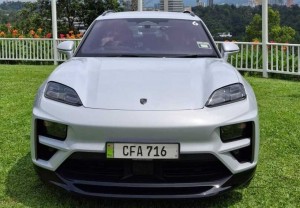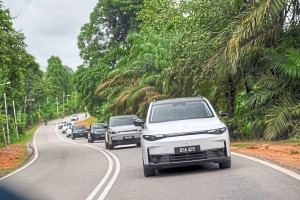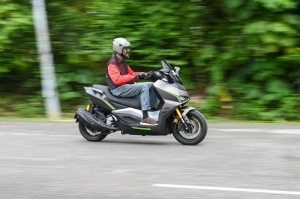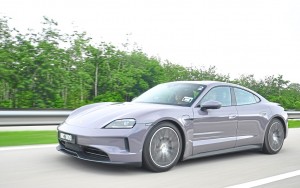PETALING JAYA: Despite having 23 toll highways snaking across Klang Valley, traffic snarls continue to be the bane for those living and working in the area.
Selangor alone has 19 such highways, and more are in the pipeline.
On July 4, Selangor infrastructure and agriculture committee chairman Izham Hashim told the State Assembly that seven more highway projects were being considered in the state.
Traffic consultant Dr Rosli Azad Khan said while highways served as critical infrastructure for economic development and connectivity, they were not a long-term sustainable solution.
He added that highways did facilitate regional development, making remote areas accessible and promoting tourism.
On the flip side, he said, their impact included accidents due to speeding, which was very costly and overlooked by policymakers.
“Tolled highways often provide poor connectivity between places, as they are designed to capture traffic for toll collection as a matter of priority, before traffic is allowed to exit at designated interchanges.

Rosli (left) and Lee.
“In Selangor, there are few places we can travel to without having to use highways and pay tolls for our daily journeys,” he said.
Rosli added that highways came with social and environmental costs.
Land is lost and carbon emission increases. As for the social impact, communities get displaced when land is acquired for highways.
“During the construction period, the area can be prone to accidents.
“When a highway divides a neighbourhood, it results in poorer access, reduces the quality of life for those living there and they suffers from noise, traffic and pollution.”
Rosli added that many countries, including Malaysia, relied on highways instead of rail for freight transportation, which increased logistics costs especially on tolled highways, serious environmental degradation and other cost implications such as higher operational costs and maintenance.
Rosli said having additional seven highways in Selangor could lead to loss of valuable lands to highway alignment, road interchanges and road reserves.
These lands could instead be used for economic purposes such as employee housing for industries and factories, or commercial and agricultural purposes.
Rosli said the focus should be on improving rail transportation.
“Invest in new, efficient and extensive rail transportation to replace highways.
“Connectivity and network of public transport centred on a central rail station provide much better access and increase mobility for a much larger population and is suitable for large urban areas.”
He said there must be mixed development to cater for both low- to medium-cost housing to reduce the need for long commutes and promote sustainable urban growth using public transport.
“Don’t focus on upmarket housing for land development along rail corridors.
“Those living in upmarket condominiums and bungalows prefer to commute in their personal vehicles,” he said.
Rosli said this contradictory approach in urban planning had been seen in many places such as Glenmarie and Tropicana (LRT3), Damansara Heights, Taman Tun Dr Ismail, Bandar Utama, Surian Kota Damansara (MRT1) and Kwasa Land Development, Sri Damansara and Desa Park City (MRT2),” he said.
G&P Highways and Transportation Sdn Bhd managing director Lee Choy Hin said motorists in the Klang Valley should not be paying to use highways just to arrive at a bottleneck.
There were even highways that had been upgraded from two lanes to three and the congestion was still there, he said.
Instead, Lee said traffic management had to be looked at holistically.
“What we need is digital infrastructure instead of more highways.
“We need seamless connection of roads to move traffic, not more highways,” he said.

“Internationally the trend is towards intelligent transport systems.
“Countries such as Taiwan, Japan and parts of Europe have turned to using the latest technology related to traffic management and it is time for Malaysia to do so too.
“We need to control traffic using digital technology and enhance the capacity of existing roads,” said Lee, who is part of a group that provides engineering related consultancy in transport planning, traffic studies, urban traffic management, engineering design of highways, interchanges, bridges and railway works.
Lee said roads leading to highways could be incorporated with the Ramp Metering system (see chart), which controls the number of vehicles that can enter a highway based on an artificial intelligence (AI) traffic light system with cameras.
The traffic light from a road linking to the highway decides when it should turn green.
“Ramp Metering can help decongest roads and control the number of vehicles on the highway, allowing a seamless flow of traffic,” he said.
Lee also suggested more effective use of the existing road integrated transport information system (ITIS).
He said ITIS often displayed less important information instead of providing essential information on alternative traffic routes which motorists could use to avoid getting caught in congestion.
Government’s role
Most countries do not profit by providing public transportation systems but governments had a responsibility to non-vehicle users too, said Lee.
He said public transport such as Mass Rapid Transit (MRT) and Light Rail Transit (LRT) must be further promoted.
“We hear some of the stations are not well patronised and it must be addressed fast.
“Find out why this is and if it has anything to do with the long waiting time for the last mile connectivity,” he said.
Lee added that the relevant authorities must coordinate their efforts.“We need government departments and all others related to this subject to work together and plan in totality.”













